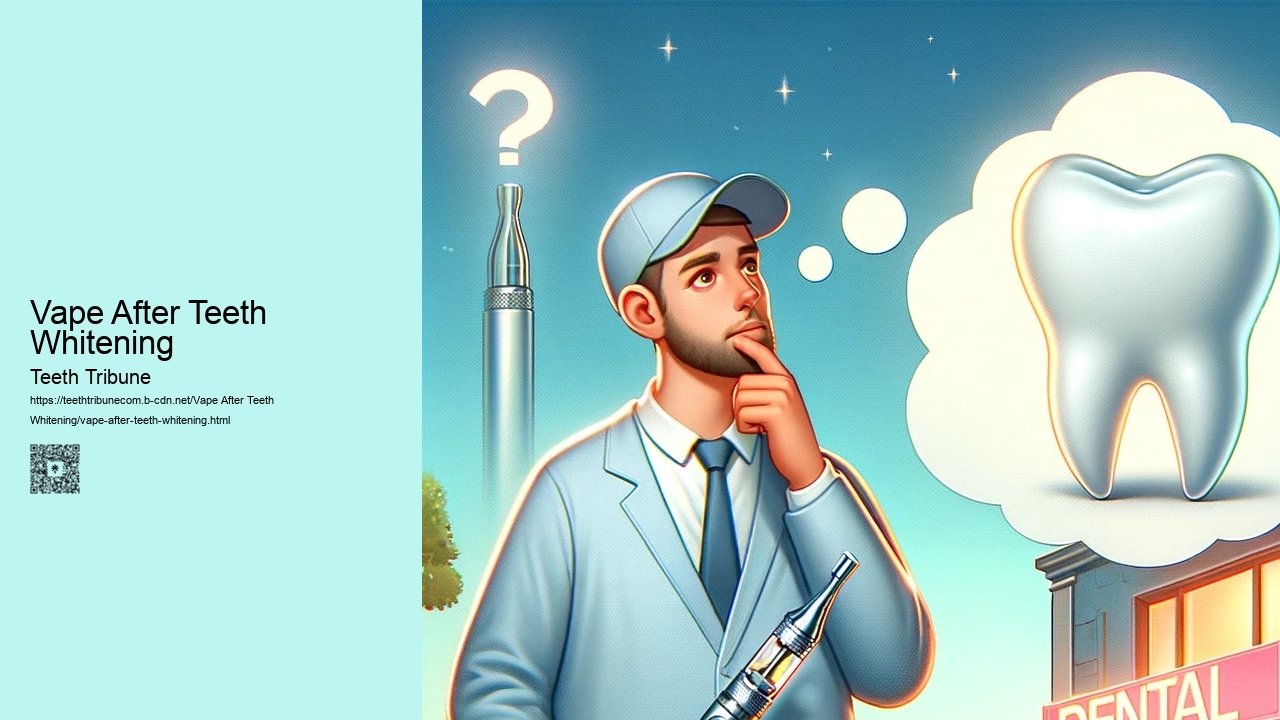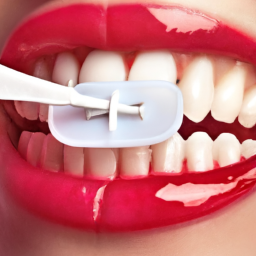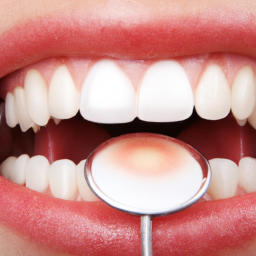

Exploring the relationship between vaping and teeth whitening is crucial for maintaining a bright smile. Post-whitening care demands careful consideration of lifestyle habits, particularly vaping.
The content of vape juice, especially those containing nicotine, may lead to tooth discoloration. This presents a challenge for individuals who have recently undergone teeth whitening procedures. It's advisable to consult with dental professionals about the appropriate waiting period before resuming vaping after whitening treatments.
To preserve the results of teeth whitening, it's essential to follow a rigorous oral hygiene routine. This includes regular brushing, using mouthwash, and possibly adopting alternative nicotine products that are less likely to stain teeth. Proper care ensures that the benefits of teeth whitening are long-lasting, even for those who vape.
Vaping's popularity has surged, but its effects on dental health are a growing concern. Unlike traditional smoking, vaping doesn't produce tar; however, it can still negatively impact teeth and gums. The aerosols in vape can contribute to dry mouth, reducing saliva, a natural cleanser for teeth.
Nicotine, present in many e-liquids, can constrict blood vessels, affecting gum health. This can lead to gum recession and increased sensitivity, making teeth more susceptible to decay and discoloration. Additionally, the varying pH levels in vaping liquids can also erode tooth enamel over time.
For vapers, maintaining oral hygiene is key. Gum Health Regular dental checkups, daily brushing, and flossing can help mitigate the adverse effects of vaping. Switching to nicotine-free vape liquids and staying hydrated can further protect teeth and gums from vaping-related damage.
Teeth whitening is a popular cosmetic dental procedure aimed at removing stains and enhancing the brightness of your smile. Understanding its basics, benefits, and considerations is key to achieving optimal results.
The Basics of Teeth Whitening: Teeth whitening can be performed either professionally in a dental office or at home with over-the-counter products. Professional whitening uses higher concentrations of bleaching agents like hydrogen peroxide or carbamide peroxide, offering more dramatic results in a shorter time. At-home methods include whitening toothpastes, strips, gels, and trays, which are gentler and more gradual in their effect.
Types of Stains: Whitening treatments are most effective on extrinsic stains, which are surface stains caused by coffee, tea, red wine, and tobacco. Intrinsic stains, which occur inside the tooth, might require more intensive professional treatments. It’s important to identify the type of staining to choose the most effective whitening method.
Safety and Sensitivity: Teeth whitening is generally safe when guidelines are followed. However, some people may experience tooth sensitivity or gum irritation, especially with higher concentrations of bleaching agents. Using products designed for sensitive teeth and following the recommended usage can minimize these effects.
Maintenance: To maintain the results of teeth whitening, avoid stain-causing foods and drinks, or consume them in moderation. Good oral hygiene practices, including regular brushing and flossing, are essential. Overuse of whitening products should be avoided to prevent enamel damage.
Consultation with a Dentist: Before starting any whitening treatment, consult with a dentist. They can assess your oral health, recommend the most suitable whitening method, and help manage any underlying dental issues. This step is crucial for both the effectiveness and safety of your whitening treatment.
In conclusion, teeth whitening is a fantastic way to enhance your smile, but it requires informed choices and proper care. Whether opting for professional treatment or an at-home approach, understanding the process and maintaining good oral hygiene are key to achieving and preserving your bright smile.
Teeth whitening is a popular cosmetic procedure, but safety should be the top priority. Understanding the right products and methods is key to avoiding unnecessary risks. It's essential to choose FDA-approved whitening products or professional services for safe and effective results.
Overuse of whitening products can lead to tooth sensitivity and damage to the enamel. Following product instructions and dentist's recommendations is crucial. Also, it's important to ensure that any existing dental issues are addressed before undergoing whitening treatments.
Post-whitening care is as important as the procedure itself. Avoiding staining foods and drinks, and maintaining a strict oral hygiene routine, can prolong the effects.

Nicotine's impact on teeth is a significant concern for both smokers and vapers. While nicotine itself is colorless, it can quickly yellow teeth when combined with oxygen. This staining is a common cosmetic issue but also indicative of deeper dental problems.
The discoloration from nicotine is usually surface-level, but it can become more ingrained over time. This makes teeth appear dull and yellow, detracting from the aesthetics of one's smile. Regular dental cleaning can help remove some surface stains, but deeper stains might require professional intervention.
To prevent nicotine-induced tooth discoloration, reducing or quitting nicotine use is ideal.
Vapers seeking to maintain white teeth should consider specialized toothpaste. The best whitening toothpastes for vapers are those formulated to tackle tough stains while being gentle on the enamel. Look for products containing ingredients like hydrogen peroxide or baking soda, known for their whitening properties.
It's important to choose toothpaste that not only whitens but also protects teeth. Formulas with fluoride can help strengthen enamel and prevent decay, a common concern among vapers.
Regular use of the right whitening toothpaste can significantly impact maintaining a bright smile for vapers. Coupling this with routine dental checkups and a balanced oral care regimen ensures that the teeth stay healthy and white, despite the challenges posed by vaping.


Combining whitening strips with vaping habits requires careful consideration. Whitening strips are a popular choice for their convenience and effectiveness, but vaping can impact their results.
It's generally advised to avoid vaping immediately before and after using whitening strips. The chemicals in vape juice can reduce the efficacy of the whitening agents and may lead to uneven whitening or increased sensitivity. Allowing time for the teeth to absorb the whitening product fully is essential.
For best results, vapers should consult with dental professionals for personalized advice. Regular oral hygiene and limiting vaping frequency can also help in maintaining the whitening effects. It's about finding a balance that works for both lifestyle and dental health.
Natural teeth whitening methods are gaining popularity for those seeking a more holistic approach. These methods often involve everyday household items and are seen as safer alternatives to chemical treatments. Common natural whiteners include baking soda, activated charcoal, and hydrogen peroxide.
Baking soda, for instance, is a mild abrasive that can gently remove surface stains on teeth. Activated charcoal is known for its toxin-absorbing properties, potentially helping remove stains. However, it's crucial to use these methods with caution to avoid damaging the enamel.
While natural methods can be effective for minor staining, they might not produce dramatic results.
Vaping, especially with nicotine-containing e-liquids, can reduce the longevity of teeth whitening results. Nicotine and other chemicals in vape juice can lead to tooth discoloration and staining, counteracting the whitening effects.
It's recommended to wait at least 24-48 hours before vaping after teeth whitening. Vaping too soon can interfere with the whitening process and potentially lead to uneven results or re-staining of the teeth.